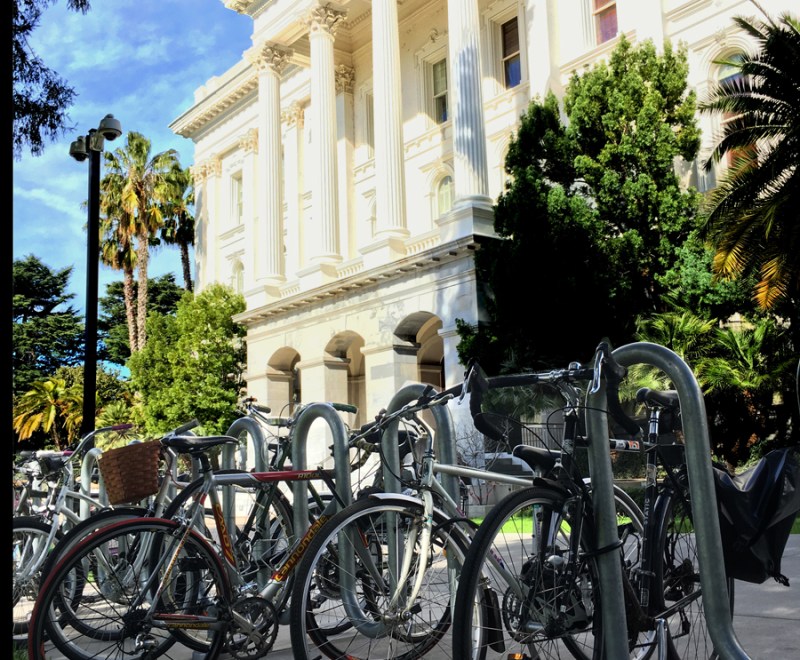
What's the secret to designing a bicycle network that will get people riding?
A pair of researchers at the University of Minnesota recently set out to test the theory that a connected bike network -- where bike lanes provide continuous routes between many possible destinations -- is a major determinant of how many people bike. What they actually found was a little unexpected. Connected bike infrastructure matters, according to the study [PDF], but not as much as the density of bike infrastructure.
UMN's Jessica Schoner and David Levinson used GIS software to map cities' bike networks and rank them according to connectivity, size, density, and other factors. ("Connectivity" is basically a measure of the degree to which bike lanes intersect within a city, and "density" is a measure of bike lane mileage within a given area.) Then, using Census data, they determined the relationship between each factor and the number of people who commute by bike.
Bike lane density was the most important factor, with each standard deviation (about 1 kilometer of bike infrastructure per square kilometer) associated with an additional 150 bike commuters per 10,000 commuters. For connectivity, one standard deviation correlated to an additional 37 bike commuters. Other factors -- the overall size of the bike network, the directness of routes within the system, and fragmentation (separate clusters of bike lanes within the same city) -- were not shown to have a statistically significant effect.
Schoner and Levinson caution that correlation does not equal causation, so it's unclear whether the dense networks enticed more people to bike, or if higher numbers of cyclists helped create denser bike networks. The study also did not distinguish between protected bike lanes, painted bike lanes, and off-street paths, so it does not account for the degree of separation between cyclists and traffic.
But the study does indicate that the density of bike lanes within a city could be an under-appreciated factor in getting more people to ride. "These findings suggest that cities hoping to maximize the impacts of their bicycle infrastructure investments should first consider densifying their bicycle network before expanding its breadth," the authors concluded.





